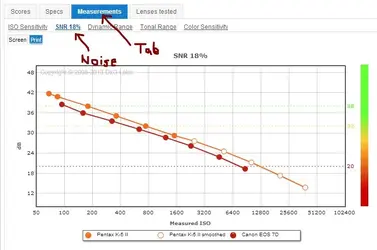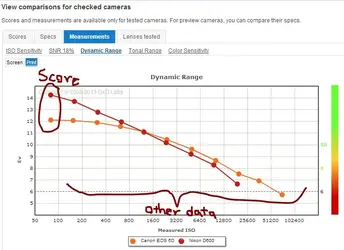Gavjenks
TPF Noob!
- Joined
- May 9, 2013
- Messages
- 2,976
- Reaction score
- 588
- Location
- Iowa City, IA
- Can others edit my Photos
- Photos OK to edit
...which is completely irrelevant to somebody asking about a 5 year old Canon camera versus a new Pentax camera. That's all I'm saying. The 7D is exactly as up to date with its sensor as somebody could possibly expect it to be.The simple truth is this: Canon has NOT updated its APS-C sensors in five years.
Did you read the rest of my post? I said that the K5-II has a better sensor (although there's no way to tell whether this is due to newer technology, or the fact that it is a larger format sensor with lower resolution, thus much larger pixels that collect more light), that it is very cheap, and that it has more bells and whistles and ergonomics. And thus is probably a better purchasing choice for somebody who is happy with Pentax brand. Who are you arguing with?The OP asked about two camera choices: the Canon 7D, or the Pentax K5-II. As the dPreview review stated in JUNE, of 2013, as in THIS YEAR, the K5-II is "one of the best APS-C dslr's in terms of high ISO performance." It also has a newly-upodated focusing system, 7 frames per second firing rate, built in in-body stabilization system, and so on. It's also available at a very good price.
This has nothing to do with this thread, since the k5-II DOES clearly have a better senso, no matter how you slice it. But still, I'm literally scratching my head as to why you persist with only paying attention to DxO mark overall scores, considering how terribly calculated they are (e.g. throwing away 90% of their own data), and considering that the much superior data also from DxO mark (the full curves) is easily available with just one extra click on the same comparison webpage. Come on, dude.as DxO Mark shows, the Pentax sensor trests out better, with a scroe of 82, veruss the Canon with its five-year-old sensor design lagging with a score of 66,
To anybody reading this: when you use DxO mark, you'll get information much more relevant to real life shooting, and more customizable to how YOU shoot, if you ignore the overall scores, and click on the "measurements" tab, then look at the individual curves:
SNR 18%: This is a measure of noise levels at different ISOs
Dynamic range: dynamic range at different ISOs
etc. for other variables.









![[No title]](/data/xfmg/thumbnail/39/39288-2d76486ccc9042c6fb525aaaaffff1fb.jpg?1734173255)
![[No title]](/data/xfmg/thumbnail/31/31012-f5e0c7cdea2f2c3e44737e3f61c2461a.jpg?1734159086)



